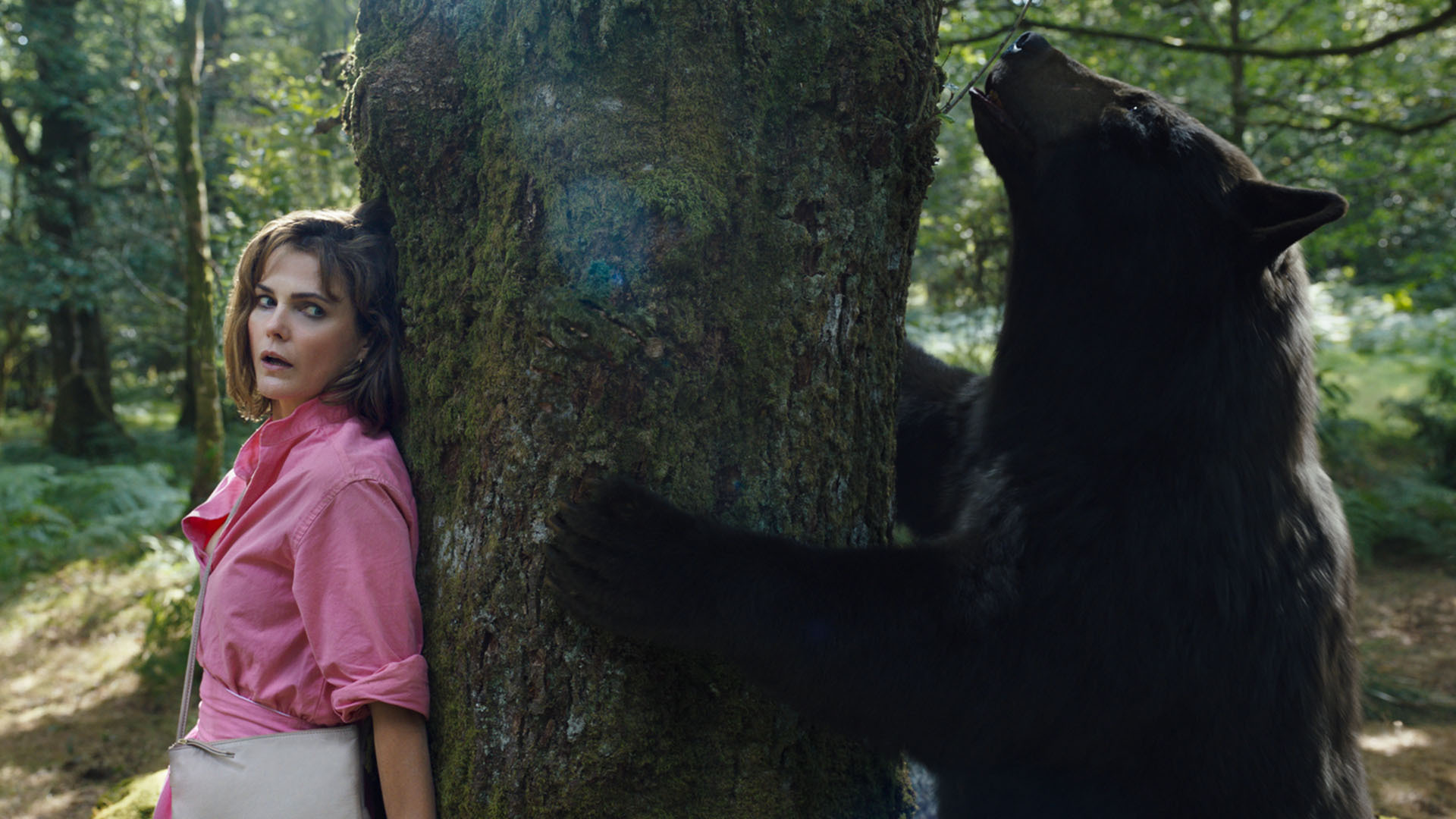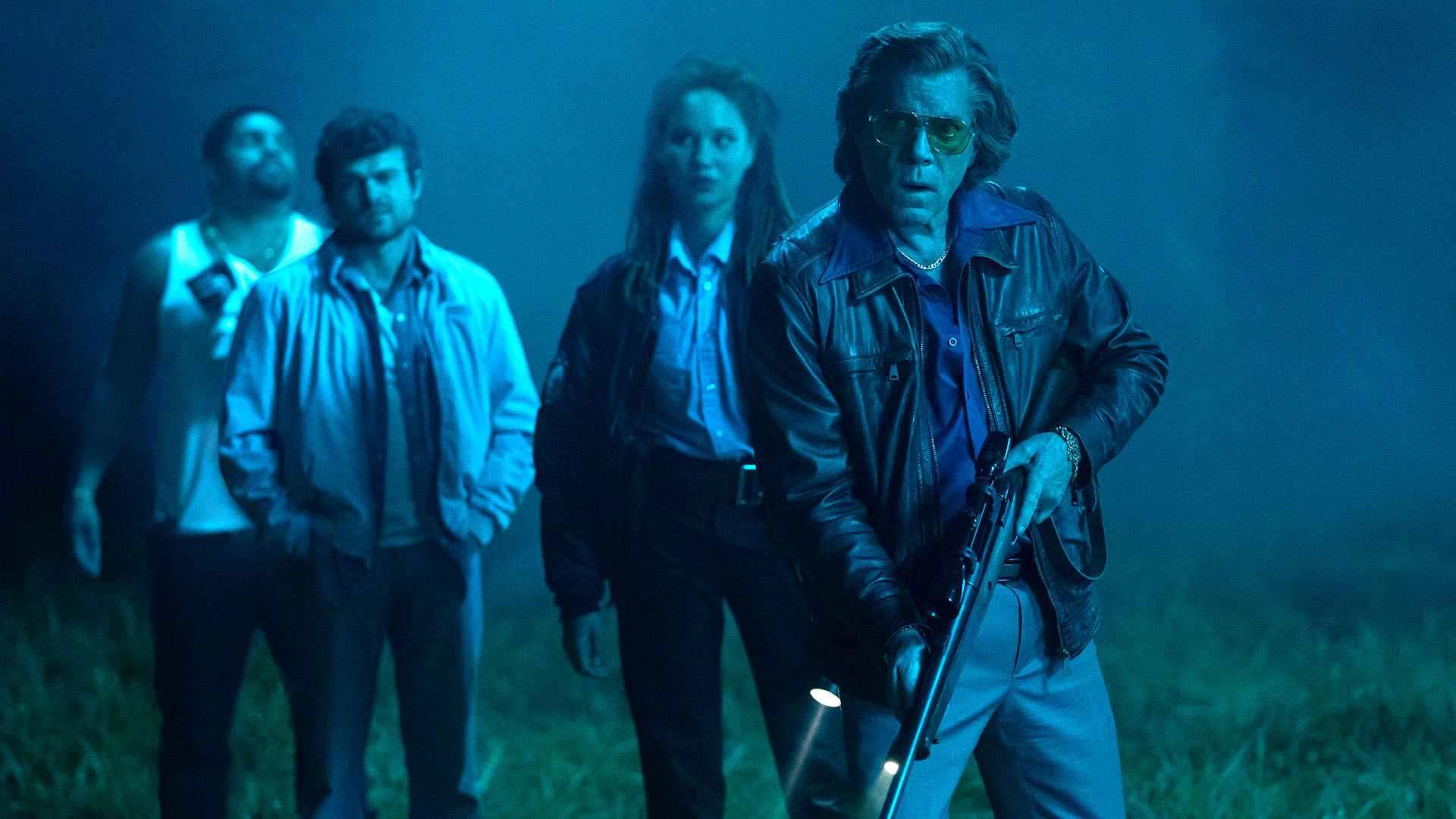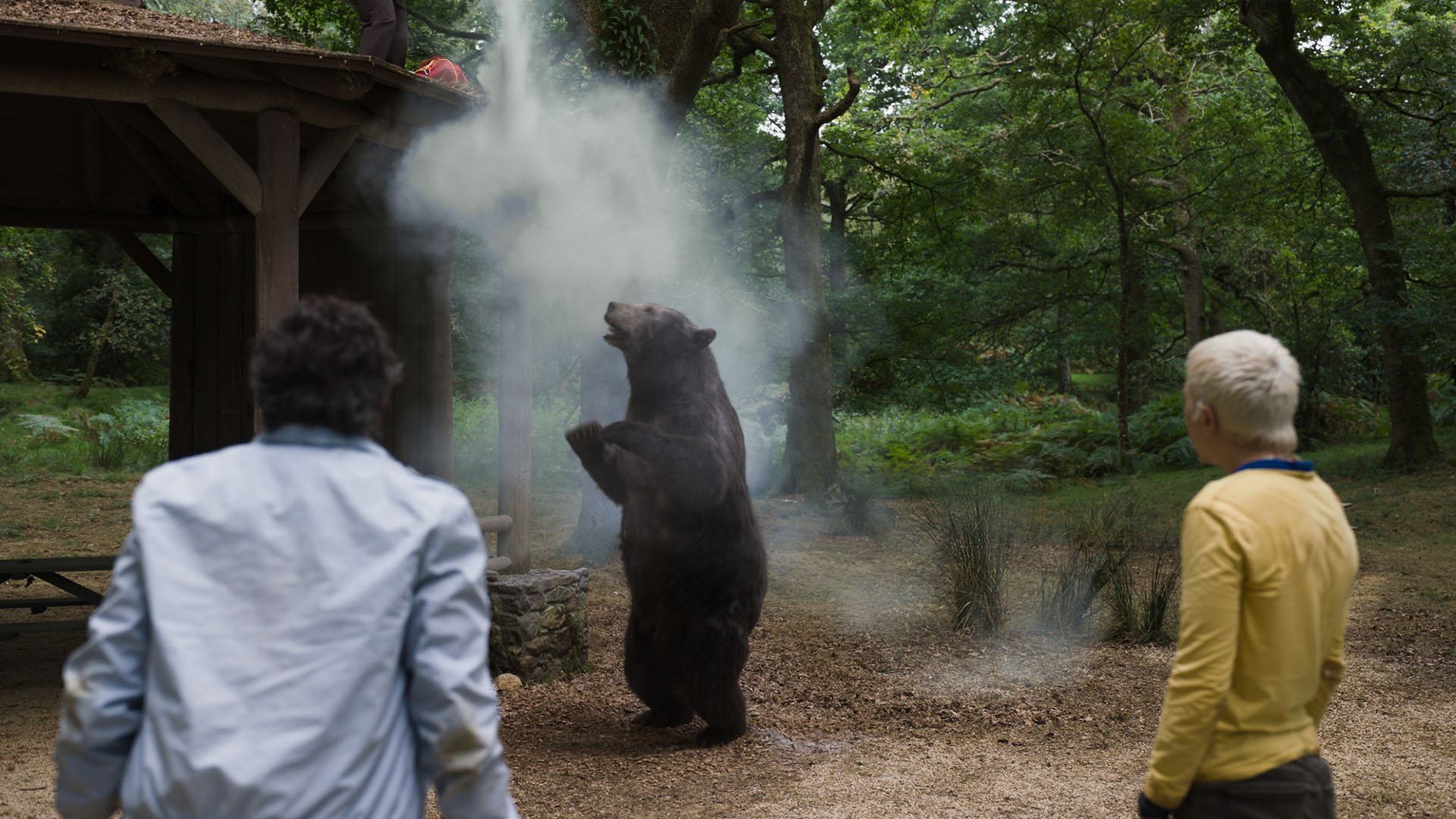Would-be gonzo comedy Cocaine Bear fumbles the bag and has a pretty crushing comedown

Imagining what might have happened in the real-life case of a bear in the 1980s who ate a duffel bag full of coke, director Elizabeth Banks conjures a comedy thriller with a touch of horror as the bear goes on a bloody rampage. Committing to a crazy movie idea is easy, making a crazy movie is another, much more difficult task, observes a disappointed Rory Doherty.
Crowds will likely eat up Cocaine Bear, the action-comedy about a bear who ingests a comical amount of the titular narcotic and embarks on drug-fuelled mission of carnage in rural 80s Georgia. But far from a ridiculous, shocking display of kills and gags that will have its audience fighting for breath between the laughs and gasps, Cocaine Bear’s heightened violence often comes at the expense of well-crafted, tense filmmaking, as if it’s signed up to indulgent silliness without really knowing how to craft the thriller needed to support it.
Yes, there’s a heap of unsightly gore in the film, but there’s an irritating knowingness to the sequences where the bear’s carnage is unleashed. It’s as if the film keeps reminding us, “I bet you can’t believe we actually made this, right?”
But it’s not enough for a film to “know what it is,” and a comedy like this doesn’t get extra points for being in on the joke, or indulging the base cravings of its kill-crazy viewership. Committing to a crazy movie idea is easy, making a crazy movie is another, much more difficult task. Basically, if you’re going to make Cocaine Bear, you have a moral imperative to make Cocaine Bear the best possible movie it can be.
Reportedly based on true events (in reality, the real black bear overdosed without attacking anyone), Cocaine Bear is not the type of movie to get angry about facts being misrepresented. Not to mention it’s also an unrealistic depiction of cocaine use—you never see the bear being an obnoxious arsehole to any of its friends at a party. But even if you were under the impression that the bear really did attack humans as a result of his cocaine fix, you’d be able to tell the movie was all fictional thanks to the gaggle of flimsy, worthless characters we spend the runtime with.

There’s nurse mom Sari (Keri Russell) who ventures into the woods to find her truant daughter Dee Dee (Brooklynn Prince) and friend Henry (Christian Convery); small-time criminal Daveed (O’Shea Jackson Jr) sent with his straight-and-narrow, grieving friend Eddie (Alden Ehrenreich) by the intimidating drug dealer Syd (Ray Liotta); a past-his-prime cop (Isiah Whitlock Jr) on the hunt for all the missing product littered around the park; and park ranger Liz (Margo Martindale) who dotes over forest preserver Peter (Jesse Tyler Ferguson). Are ya keeping track?
That doesn’t cover all the bit-part actors, which include punk “teenagers” played by people in their 30s, Scandinavian hikers, a rookie cop, and a couple paramedics (one of them played by a TikToker)—a lot of these characters appear and disappear from the film as they see fit, with only a few of them dying from bear attack. It’s a common adage that monster movies should show their creature as little as possible in order to instill dread in the audience, but that doesn’t apply to Cocaine Bear; it certainly understands to hide its killer but is unsure how to build suspense to it reappearing.

Helmed by Elizabeth Banks (Pitch Perfect 2) and working off a script by Jimmy Warden (The Babysitter: Killer Queen), Cocaine Bear is undoubtedly the tightest and most confident work both director and writer have produced. But it’s first and foremost a mainstream American comedy, a genre that historically (at least in the last 20 years) has not boasted the most creative and proficient filmmaking—something necessary in a violent, tension-filled thriller. Too often do we lose track of our coked-up heroine, she just wanders purposelessly in and out of scenes whenever it best suits the film. It’s not that a bear shouldn’t be imprinted with a set of values or motives, but when one batch of characters finally crosses paths with the animal 70% into the film, you realise how structurally unsound so much of Cocaine Bear is.
Why does it matter for Cocaine Bear to have a solid structure? Because by the time we reach the laborious third act, the screenplay’s lack of narrative clarity deflates all the pulsating energy we should be feeling, and a tired, clumsy climax ends the film on a sour note. It’s not for lack of trying from the actors—standouts include both the child actors and the older cast members of Liotta, Martindale and Whitlock Jr—but there’s only so much they can do with a film clueless about how to give us a wild, gonzo experience.

Banks isn’t completely ill-suited to the material; there are isolated grace notes of thrilling horror, and more visual jokes land than the ones in dialogue. But once the high of the outrageous premise and sporadically excessive gore wears off, all the missed opportunities to do something truly brilliant become clear. Cocaine Bear is a funny idea, but maybe it could only be truly funny by being made by people who took it seriously. The visual style of Hollywood comedies does not match the language found in good B-movie thrillers, and Cocaine Bear bets on the wrong horse by prioritising the laughs. The only crime here is how much this bag was fumbled—and has a pretty crushing comedown.



















